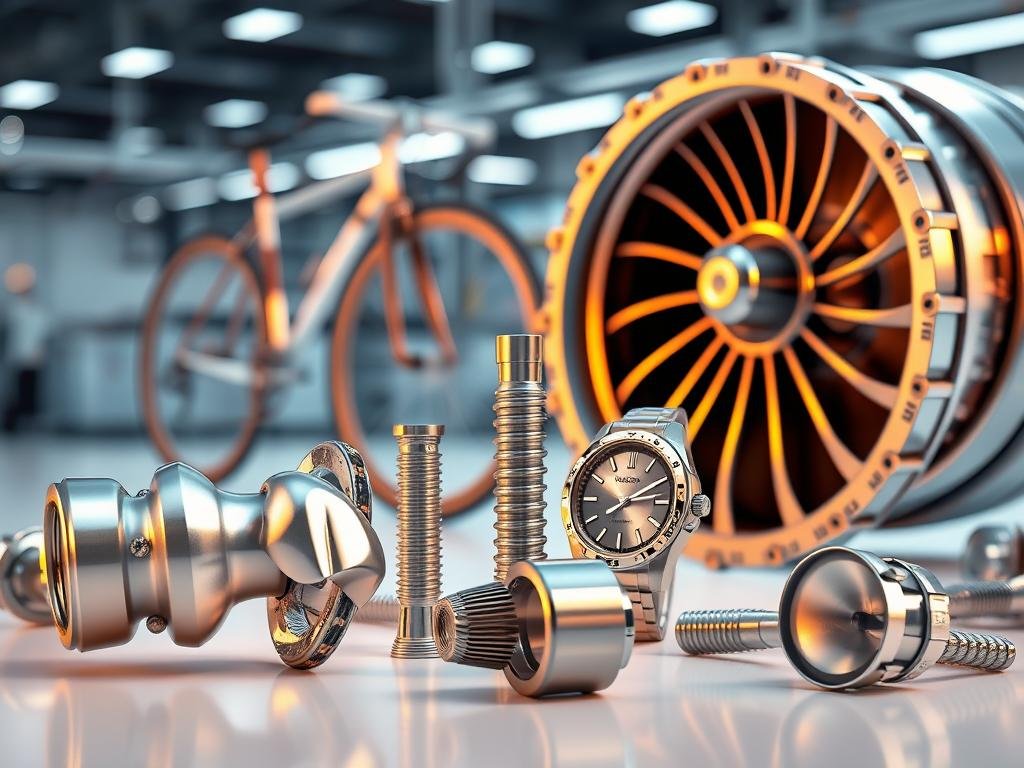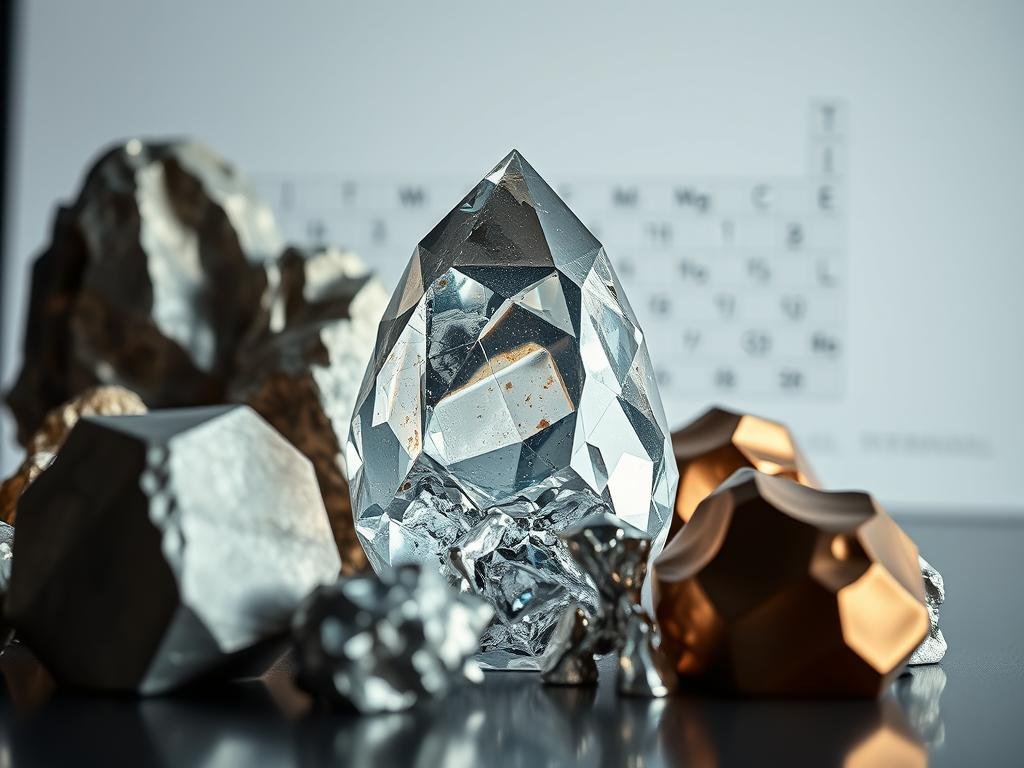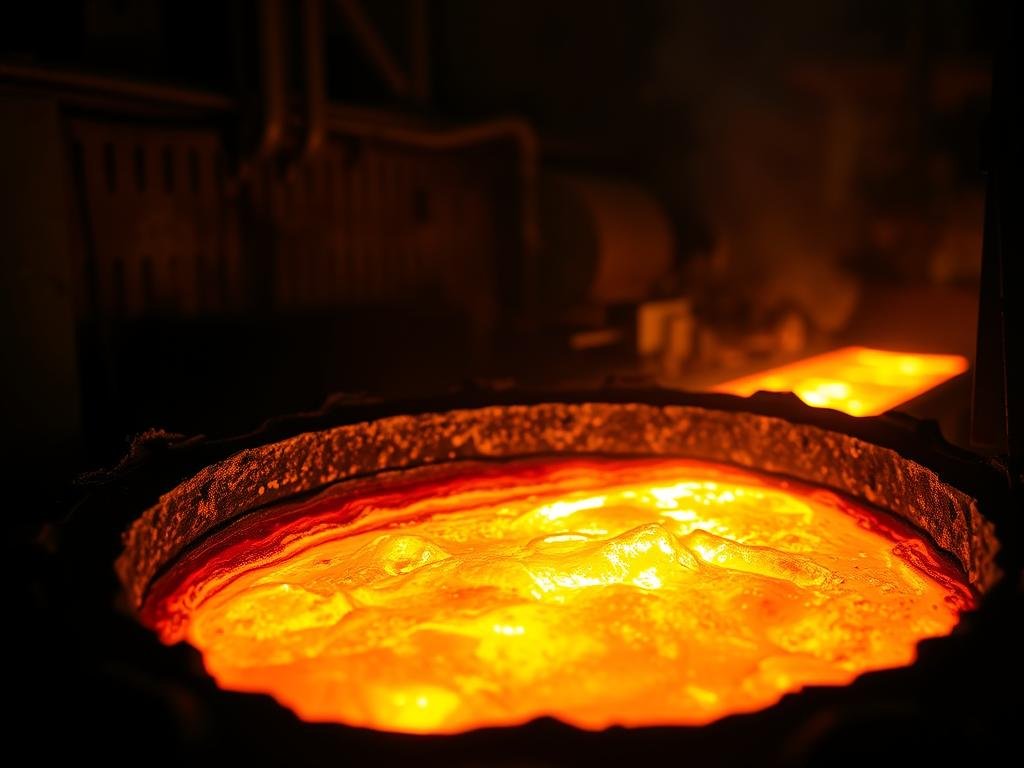Surprising fact: engineers rely on a 1,668°C (3,034°F) benchmark when choosing metals for jet engines and implants. This single value drives design, processing, and safety limits across critical industries.
In this guide we explain whats is the titanium melting point and why that number matters for casting, welding, forging, and additive processes. Rapidaccu brings over 15 years of CNC machining experience to help translate data into real parts, from prototypes to production.
Low density (~4.5 g/cm³), high strength-to-weight, and corrosion resistance pair with a high melting point to make this material a go-to for aerospace, medical, and chemical applications. You will learn how grade, purity, and alloying shift behavior and when inert shielding or vacuum become essential.
Read on to see how melting point figures shape wall thickness, tolerances, and machining routes. This section sets the stage for practical comparisons, process choices, and design tips that save time and cost.
Defining the melting point of titanium and the exact value at present
A clear numeric benchmark guides engineers when planning heat processes for high-strength alloys. For pure metal under standard atmospheric pressure, that benchmark is a fixed engineering datum used on data sheets and in design tables.
Pure metal benchmark
Pure titanium melts at 1,668°C (3,034°F) at normal pressure. Labs measure this with high-temperature furnaces and DSC to establish a repeatable property for material selection.
Why real processes show a range
Real-world results often appear as a range. Alloying additions, interstitials like oxygen or nitrogen, and local thermal gradients shift or broaden the onset of liquefaction.
- Alloys such as Ti‑6Al‑4V typically melt around 1,604–1,660°C.
- Melting in vacuum or inert gas prevents oxygen and nitrogen uptake that alters surface chemistry.
- Pressure, stress, and shop conditions can raise or lower measured values slightly.
| Property | Pure value | Common alloy range |
|---|---|---|
| Accepted benchmark | 1,668°C (3,034°F) | 1,604–1,660°C (Ti‑6Al‑4V) |
| Measurement method | Furnace / DSC | Controlled vacuum / inert tests |
Rapidaccu’s engineering team uses this exact figure to set toolpaths, cutting parameters, and inspection plans that protect finish and tolerances. For more background on elemental behavior, consult a material reference like titanium data.
whats is the titanium melting point and why it matters for design and manufacturing
Understanding how a metal loses strength before reaching liquefaction saves parts from early failure. With 15+ years of production experience, Rapidaccu helps translate thermal behavior into manufacturable designs.

High-temperature stability and structural integrity in service
Service performance depends on allowable peak temperatures and duty cycles. Mechanical strength begins to decline near 430°C (806°F), so designers add safety margins for fasteners, wall thickness, and ribs.
Implications for casting, forging, welding, and CNC machining
- Casting/forging: gating, risering, and controlled cooling limit porosity and distortion around high melting point behavior.
- Welding: tight heat input control and full argon shielding, including back purge, prevent oxygen/nitrogen pickup that embrittles welds.
- CNC machining: low thermal conductivity pushes heat into cuts; tooling, feeds, and coolant strategies protect finish and accuracy.
| Process | Key control | Design impact |
|---|---|---|
| Casting | Cooling rate | Gates, risers, section sizes |
| Welding | Shielding | Joint prep, post-weld heat |
| Machining | Heat removal | Tooling, feeds, surface finish |
Rapidaccu collaborates early with engineers to align melting-related constraints with manufacturability across aerospace, medical, and chemical industries. For deeper technical detail see point titanium.
Key factors that affect titanium melting points in practice
Several metallurgical factors shift practical fusion temperatures during processing.
Alloying elements and phase shifts
Alloy additions such as aluminum, vanadium, molybdenum, and nickel change phase equilibria. For example, Ti‑6Al‑4V shows a lower fusion interval near 1,604–1,660°C compared to pure metal. Rapidaccu engineers use alloy choice to set thermal windows for forging, welding, and additive builds.
Purity levels and interstitials
Oxygen and nitrogen act as interstitials that reduce ductility and depress effective melting behavior. High-purity grades retain strength and are preferred for aerospace and medical parts. Strict atmosphere control prevents property loss during high-heat steps.
Pressure and atmosphere
Lab values are measured at standard pressure. In production, increased pressure raises fusion temperatures slightly while inert or vacuum atmospheres prevent oxidation and embrittlement. Shielding and purge practice are essential quality controls.
| Factor | Effect | Action |
|---|---|---|
| Alloying | Shifts melting interval | Select thermal window by alloy |
| Interstitials | Lower ductility, depress fusion | Specify high-purity grade |
| Atmosphere/pressure | Alters fusion and weld pool | Use vacuum/inert shielding |
Practical guidance: pick alloy and grade to match the thermal window, define purge methods, and require inspections to verify tensile and fatigue performance. For detailed reference, see understanding the melting behavior.
Titanium versus other metals: where the melting point stands
Comparing fusion temperatures across common alloys helps designers pick the right material for hot or weight‑sensitive parts.

Titanium vs aluminum
Titanium at 1,668°C offers far greater thermal margin than aluminum at 660°C. That gap explains why parts facing sustained heat often shift from aluminum to a stronger, lighter alloy.
Titanium vs stainless steel
Stainless grades melt near 1,400–1,530°C. Titanium delivers similar or higher temperature capability while cutting mass. This improves weight ratio for airborne hardware.
Titanium vs nickel and tungsten
Nickel melts around 1,455°C and tungsten at 3,422°C. Titanium sits between these metals, balancing heat resistance and low density for many aerospace and medical uses.
| Metal | Melting (°C) | Density (g/cm³) | Design takeaway |
|---|---|---|---|
| Titanium | 1,668 | 4.5 | High strength-to-weight; good for brackets |
| Aluminum | 660 | 2.7 | Low mass but limited heat use |
| Stainless steel | 1,400–1,530 | 7.8 | Strong, heavier; good for structural loads |
| Tungsten | 3,422 | 19.3 | Extreme heat; very heavy |
Rapidaccu helps customers choose material and manufacturing plans by balancing melting behavior, weight targets, and finish needs. For example, airframe brackets favor titanium for weight savings, while turbine hot sections may require nickel alloys depending on gas‑path conditions.
Performance at elevated temperatures beyond the melting point number
Parts rarely fail at fusion; they fail from lost strength and surface change long before that mark. For engineers, tensile retention, creep behavior, and oxidation resistance define useful service limits more than a single lab fusion value.
Strength retention and oxidation resistance under heat
Strength begins to drop near 430°C (806°F), so duty cycles and safety factors must reflect that threshold. Creep and reduced fatigue life appear with sustained exposure above this temperature.
Oxidation and corrosion resistance remain strong compared with many alloys. That resistance helps lower maintenance and supports use in chemically aggressive environments and elevated temperatures.
Examples in aerospace engines, chemical processing, and sterilization
Common applications include engine‑adjacent brackets and structural fittings in aerospace, heat exchangers and reactors in chemical plants, and surgical instruments that face repeated steam sterilization.
| Application | Service concern | Recommended control |
|---|---|---|
| Aerospace brackets | Strength loss at high temperatures | Design safety margins; inspection intervals |
| Chemical heat exchangers | Oxidation and corrosion | Coatings or controlled atmosphere; finish spec |
| Medical instruments | Repeated steam heat | Deburring; passivation; dimensional checks |
Rapidaccu advises allowable operating temperatures, targeted coatings, and edge finishing to preserve surface integrity and functional performance after thermal exposure. Accurate process control and full documentation ensure parts meet properties and dimensional targets throughout service.
How melting behavior informs titanium processing innovations
Advanced melting methods shape feedstock quality and drive consistent part performance in critical builds.
Electron Beam Melting (EBM) and Plasma Arc Melting (PAM) reduce interstitials and stabilize microstructure. This yields cleaner feedstock, predictable fusion behavior, and better fatigue life for engine and structural parts.
EBM and PAM benefits
These remelt routes lower oxygen and nitrogen. They produce uniform grains and repeatable mechanical properties in titanium alloys.
Welding and inert shielding
Welding must use argon shielding, back purge, and controlled heat input to avoid alpha-case and embrittlement in the heat-affected zone. Choosing compatible filler and post-weld heat treatment restores targeted properties.
- EBM/PAM: reduce impurities, improve machinability and surface finish.
- Inert gas protocols: prevent oxidation during joining.
- Vacuum or inert chambers: mandatory for additive powder handling.
| Process | Primary benefit | Manufacturing impact |
|---|---|---|
| EBM / PAM | Higher purity | Stable tool wear, tighter tolerances |
| Argon-shielded welding | Prevent alpha-case | Improved fatigue life after PWHT |
| QA checks | Spectrography & tensile test | Confirm specs for engine parts |
Rapidaccu integrates these controls into manufacturability reviews and links process choices to consistent part outcomes. For a deeper reference see melting point reference.
From prototypes to production: Rapidaccu’s precision approach to titanium parts
Producing critical parts requires a machining strategy that manages heat, vibration, and material behavior at every step.
Rapidaccu brings over 15 years of CNC experience to turn designs into reliable production runs. We start with DFM and material selection so each part meets functional and cost targets.
Machining for surface finish and accuracy in high-heat applications
Low thermal conductivity concentrates heat at the cut. We control that with sharp tooling, optimized feeds and speeds, and high-pressure coolant to protect surface integrity.
- End-to-end support from DFM, toolpath optimization, to metrology for tight tolerances.
- Heat mitigation via coolant, reduced engagement, and tool coatings to limit friction and galling.
- Fixture design and vibration control to protect thin-walled, weight-critical aerospace components.
- Inspection protocols: CMM, optical checks, and surface profilometry validate geometry and finish.
- Scalable processes that keep unit cost, cycle time, and material usage consistent from prototype to production.
| Stage | Control | Outcome |
|---|---|---|
| Preproduction | DFM & material choice | Parts that meet strength and properties targets |
| Production | Tooling & coolant strategies | Consistent finish and tight tolerances |
| Quality | Metrology | Verified critical features for aerospace and medical applications |
Conclusion
This guide links a 1,668°C benchmark to practical design and shop choices. Use fusion data along with strength retention near 430°C to set safe operating envelopes and inspection plans.
Alloy choice, purity, and atmosphere change final performance. Ti‑6Al‑4V and other titanium alloys show slightly different fusion ranges, so pick feedstock that matches service temperatures and corrosion resistance needs.
Compare metals by weight, density, and fusion capability to choose materials for aerospace and other industries. Integrate these facts into casting, welding, and CNC strategies to protect finish, tolerance, and fatigue life.
Rapidaccu stands ready to help select material, tune process, and deliver production-grade parts with precision and consistent quality.

